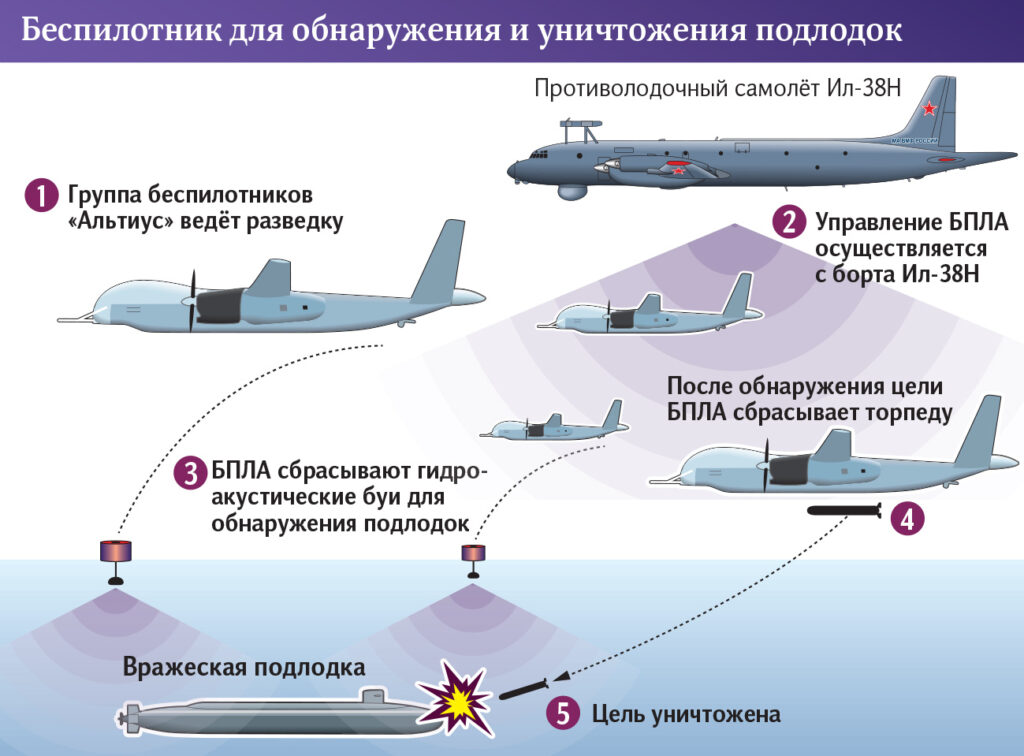The Russian Ministry of Defense has been working on developing a special unmanned aerial vehicle (UAV) and a control system for it for anti-submarine purposes, Russian newspaper Izvestia shared. There is no detail if a new drone is under development or current drones would be adapted for the ASW role. It is planned that such drones will operate in a “swarm” using artificial intelligence elements. According to Russian experts, drones with high payload capability, such as C-70 Okhotnik, would suit the project.
Air assets in Anti-Submarine Warfare:
Surface assets bear a high risk during anti-submarine warfare operations. Because they enter the torpedo danger zone while searching for the submarine, it’s a challenging process to seek and destroy a sub because the sound waves sending from hull-mounted sonars cannot go beyond the layer-depth where submarines generally hide. Therefore, operating air assets such as ASW helicopters and Maritime Patrol Aircraft are considered the best practices to cope with the submarine threat. Air assets can break the layer-depth by using sonobuoys or dipping sonars, and submarines cannot engage these assets with torpedoes and UGMs.
Of course, there are some limitations for the air assets during operations. They have a limited mission period due to the refueling needs and the boundaries of the pilots. Unmanned Aerial Vehicles will remedy these issues because new generation UAV/UCAVs can fly more than 24 hours without interruption. Establishing a 24-hour air patrol in the submarine area will cause serious trouble for a sub. Besides, if the submarine is diesel-electric, it will be hard for her to make snorkeling to charge the batteries.
Russian ASW drone Project:
To conduct ASW missions, the Russian Ministry of Defense has been preparing a new concept. They plan to use heavy drones equipped with submarine detection equipment and anti-submarine weapons. These UAV/UCAVs would operate in the same network simultaneously and hold ASW ops in cooperation.
These drones would be launched from ground airfields or ships. They plan to control them both from naval and air command posts, with the active use of automation capabilities and elements of artificial intelligence. UAV/UCAVs will either independently hit targets or direct them to anti-submarine weapons strikes from other carriers.

The Russian Navy already has a large number of drones in its composition. In service are UAV “Forpost”, which weigh about half a ton, and light “Orlan-10”. Naval vehicles were actively used in the Russian operation in Syria.
An anti-submarine drone must have a large flight radius and the ability to stay in the air for a long time. It needs to be able to launch sonobuoys and receive signals from them, and then either process them itself or send the results to a specialized aircraft or ground C2 center.
Such a UAV should carry at least one anti-submarine torpedo. “Hunter” and “Altius” drones are considered the promising ones to bear this mission. Their dimensions and carrying capacity make it possible to place the necessary equipment and weapons on the suspension.



